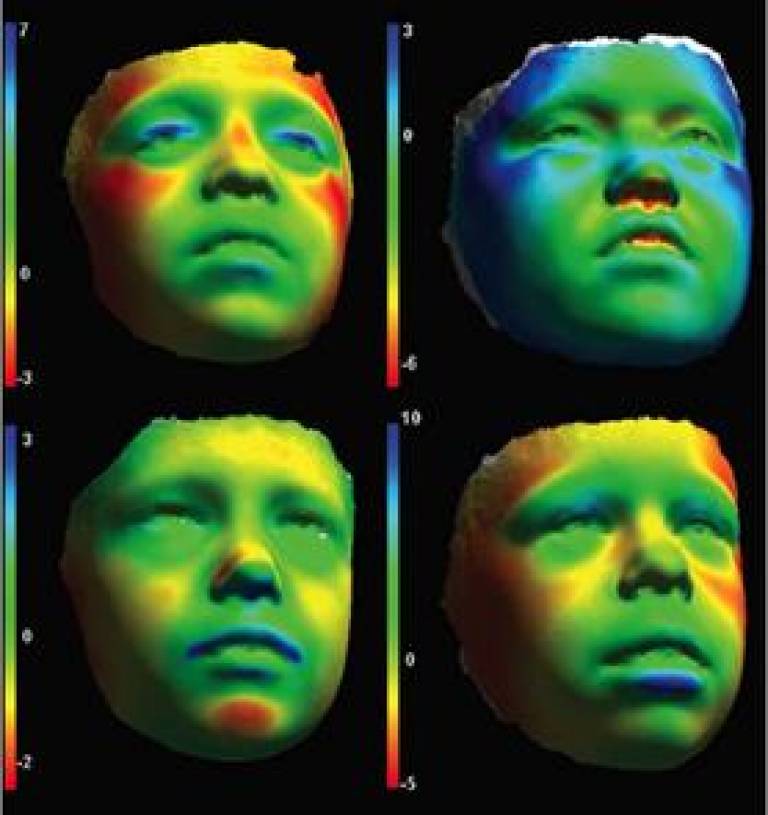Facial morphology offers new technique for identifying genetic syndromes
29 November 2005
A computer modelling technique developed by Professor Peter Hammond's team at the UCL Eastman Dental Institute has contributed to the identification of a gene critical to the craniofacial aspects of Williams-Beuren Syndrome.

The three-dimensional facial morphology technique developed at the institute's Biomedical Informatics Unit can accurately discriminate between the faces of controls and individuals with a variety of genetic conditions, including 22q11deletion, Noonan, Williams-Beuren and Smith-Magenis syndromes.
Professor Hammond said: "Craniofacial abnormalities are a common trait of many syndromes. Indeed, the facial gestalt often suggests a preliminary diagnosis before a clinical examination is undertaken. A single facial feature, such as nose shape, may even be enough to suggest a particular syndrome."
The face analysis technique is rapid, non-invasive, and produces a three-dimensional image of the face surface. The 3D face images are captured using a commercial photogrammetic device. Each image is then annotated with landmarks at specific points around the face prior to creating a dense surface model (DSM) representing the variation of face shape of hundreds of images. Once the DSM has been created, it can be used to determine if an individual face is more like a control group or a group of individuals with a particular syndrome. The technique is able to place faces within the correct grouping with an accuracy of over 90 percent. The team are creating face shape models for over 20 different conditions. The models can also provide approximations of facial growth, to compare the craniofacial development of different groups of children.
Many syndromes are recognisable by a particular facial feature, such as a particular lip or nose shape, which often become more pronounced with age. Identifying and discriminating between syndromes is important at an early age, because affected individuals will often have specific learning disabilities, cardiovascular defects and behavioural abnormalities.
In a recent collaborative study, Professor Hammond's facial analysis technique was combined with molecular analyses by Dr May Tassabehji (Manchester University) for one patient with Williams-Beuren Syndrome. This syndrome is caused by a deletion that typically deletes 28 genes from chromosome seven, affecting craniofacial, cardiac and cognitive development, with typical features including over-friendliness and numerical deficiency. The findings, published in the November issue of 'Science' magazine, for the first time identify a specific gene - GTF2IRD1 - as critical for the craniofacial effects of this syndrome.
Professor Hammond said: "Using this combination of techniques is a very exciting breakthrough in the accurate identification and discrimination of syndromes, as well as providing information on their genetic causes."
Image: Comparison of exaggerated average faces of syndromic groups with the average control. Upper left, NS; upper right, SMS; lower left, 22q11DS; and lower right, WS. The colour coding reflects the distance between the compared face surfaces. Red, regions most distant and internal to the mean control face. Blue, regions most distant and external. Other colours shown in the scales identify intermediate positions. Each figure has its own quantitative scale and also uses a different 'zero' colour for regions where the two surfaces coincide
 Close
Close

